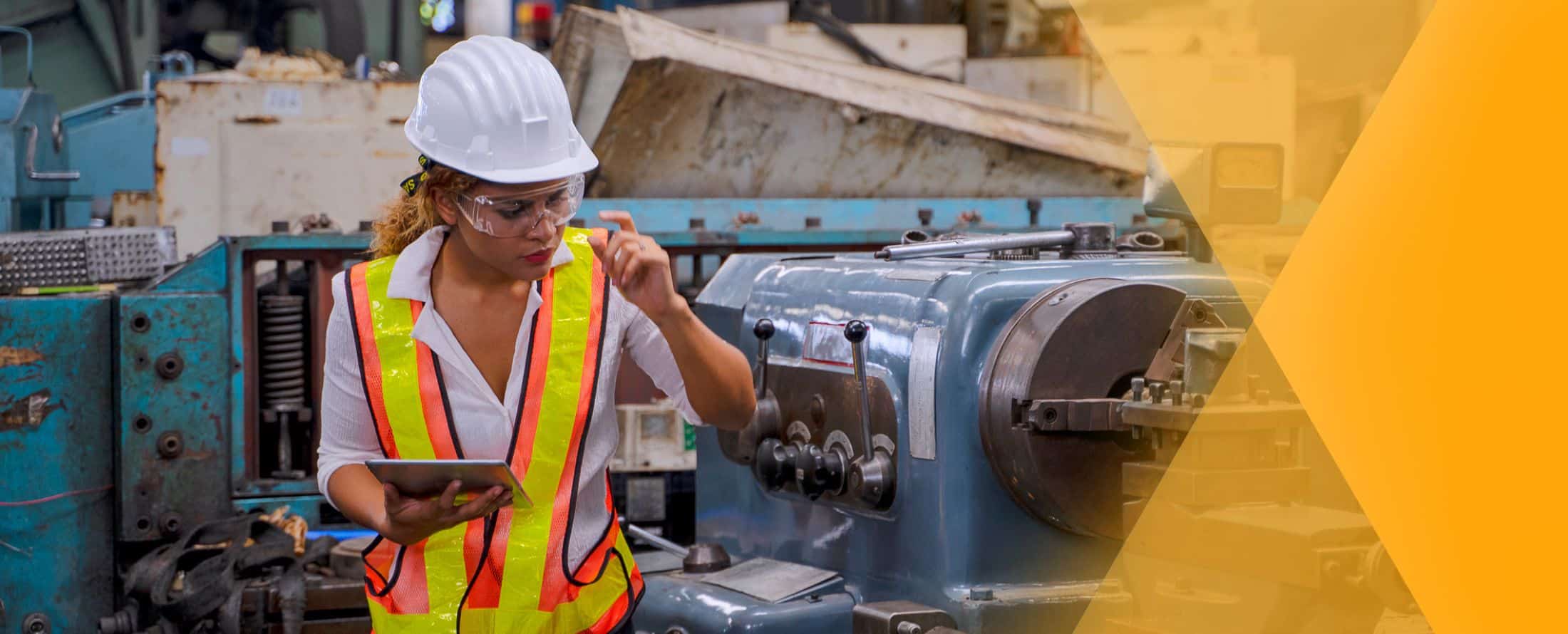Preventive maintenance scheduling is an important part of any facility management program, as it helps prevent equipment breakdowns, avoid unexpected downtime, and keep operations running smoothly.
Learn how preventive maintenance can boost equipment uptime by 20%.
By implementing a preventive maintenance schedule, organizations can save costs, increase safety, and improve equipment efficiency.
In this article, we’ll be taking a look at:
- The benefits of developing a preventive maintenance schedule
- What an effective preventive maintenance schedule includes
- Best practices for implementing and managing preventive maintenance schedules
Let’s begin.
Preventive Maintenance Plan vs. Preventive Maintenance Schedule
First, let’s look at how a preventive maintenance plan differs from a preventive maintenance schedule. They both fall under the umbrella of preventive maintenance but differ in some key ways.
Preventive maintenance is an essential aspect of any facility management program. It involves regularly scheduled maintenance activities that are carried out to prevent equipment breakdowns and avoid unexpected downtime. Preventive maintenance can be implemented in different ways, either through a preventive maintenance plan or a preventive maintenance schedule.
A preventive maintenance plan is a comprehensive document that outlines all the maintenance activities necessary to keep equipment in good working condition. It includes the:
- Details on the type of equipment
- Maintenance tasks required
- Frequency of maintenance
Preventive maintenance plans are usually developed based on the manufacturer’s recommendations, industry standards, and the specific needs of the facility. They serve as a guide for maintenance technicians, giving them a clear understanding of what needs to be done to maintain equipment.
On the other hand, a preventive maintenance schedule is a list of specific tasks and activities that are planned and scheduled for a particular period. It outlines the maintenance tasks that need to be carried out and the timeline for the tasks. It also provides a concise overview of the maintenance activities that need to be carried out, making it easier for technicians to plan their work.
While the preventive maintenance plan provides a comprehensive overview of all maintenance tasks, the preventive maintenance schedule provides a specific timeline for the tasks to be completed.
Why Is a Preventive Maintenance Schedule Important?
A preventive maintenance schedule is essential for any facility management program because it:
- Ensures that equipment is regularly maintained to avoid unexpected breakdowns and downtime
- Helps to identify potential problems before they occur
- Enables maintenance technicians to take corrective measures to prevent equipment failure
- Helps to extend the lifespan of equipment
- Ensures that all maintenance tasks are carried out on time
- Minimizes the impact of maintenance on production
Preventive maintenance scheduling is crucial for maintaining the reliability and efficiency of equipment. Other big-picture benefits include:
Cost Saving
Here are some of the key ways that preventive maintenance schedules can help save costs:
1. Reduced downtime: Regular maintenance can help identify and address issues before they escalate into major problems, which can result in costly and prolonged downtime. By preventing breakdowns and other equipment failures, organizations can keep their operations running smoothly and avoid lost productivity.
2. Longer equipment lifespan: Proper maintenance can help extend the lifespan of equipment, which can save organizations significant sums on replacements and upgrades. By ensuring that equipment is properly cared for, companies can get more value from their equipment and delay the need for costly replacements.
3. Lower repair costs: Catching and addressing issues early can help prevent them from becoming more serious and expensive to fix. By investing in regular maintenance, companies can avoid costly emergency repairs and replacements, which can be more expensive than preventive measures.
4. Improved efficiency: Regular maintenance can help ensure that equipment is operating at peak efficiency, which can save energy and other operating costs. By keeping equipment running smoothly, organizations can reduce their overall operating costs and maximize efficiency.
Increased Safety
Preventive maintenance schedules help increase safety in the workplace because they minimize the risk of accidents and other safety hazards, which can have serious consequences for both employees and customers. Here’s how:
- Regular maintenance helps identify and address potential safety risks before they escalate into major issues. By addressing safety issues early on, organizations can keep operations running smoothly and reduce the risk of dangerous accidents.
- Proper maintenance can help ensure that safety equipment is functioning as it should be. This can help protect employees from dangerous situations and help keep customers safe. By regularly servicing and testing safety equipment, organizations can be confident that they are meeting the necessary safety standards.
- Preventive maintenance scheduling can help avoid costly liabilities and other legal issues. By ensuring that safety equipment is regularly serviced and tested, organizations can reduce the risk of being held liable for accidents or other safety-related issues.
- Regular maintenance can help reduce stress and fatigue among employees. By ensuring that equipment is running properly and that safety protocols are in place, employees can feel more secure in their work environment and be better able to focus on their tasks.
Improved Equipment Efficiency
By performing regular inspections and maintenance activities, technicians can detect any issues early on and address them before they escalate, helping to prevent breakdowns and prolong the equipment’s life.
Preventive maintenance schedules keep organizations on track when it comes to making sure that equipment is operating at peak efficiency. Regularly scheduled maintenance activities such as lubrication, cleaning, and calibration can help to optimize equipment performance, reduce energy consumption, and improve productivity.
Also, preventive maintenance scheduling can help to reduce the cost of repairs and replacements. By solving issues early on, technicians can avoid costly repairs and replacements that may be required if problems are left unaddressed.
How to Develop a Preventive Maintenance Schedule
How can organizations develop their own preventive maintenance schedule template?
Let’s look at some first steps to get started:
1. Identify Equipment and Critical Components
By conducting an equipment inventory and categorizing the equipment based on its importance, businesses can prioritize maintenance activities and ensure that essential equipment and components receive the necessary attention.
This step involves conducting an equipment inventory by:
- Categorizing equipment based on their importance
- Assessing the equipment’s role in the business operations
- Determining the frequency of use
- Estimating consequences of failure
Once the equipment has been categorized, organizations can identify critical components, the parts of the equipment that are essential to its operation and require regular maintenance. Examples of critical components include bearings, belts, motors, and sensors.
2. Determine Maintenance Tasks
To determine maintenance tasks, organizations can review the manufacturer’s recommendations for maintenance. The manufacturer’s recommendations will provide guidance on the specific maintenance tasks that need to be performed, the frequency of maintenance, and the required parts and tools.
Organizations should also consider their own operational needs and requirements. For example, if a piece of equipment is used frequently or in a harsh environment, it may require more frequent maintenance. Also, consider the consequences of failure for each piece of equipment. Equipment with a high consequence of failure may require more frequent and more thorough maintenance.
3. Establish Maintenance Intervals
Establishing maintenance intervals involves determining how often maintenance tasks need to be performed on each piece of equipment in order to keep it running efficiently and effectively.
When establishing maintenance intervals, organizations can start by taking a look at the manufacturer’s recommendations for maintenance frequency and the required parts and tools. Organizations should also consider their own operational needs and requirements, including the equipment:
- Frequency of use
- Environment it operates in
- Consequences of any failure
Once the maintenance intervals have been established, it’s time to start assigning tasks to team members.
4. Assign Responsibilities
To start assigning responsibilities, identify the skills and expertise required for each task. Maintenance tasks may require specialist knowledge or technical skills, and it is important to make sure that the person responsible for each task has the necessary qualifications and experience. This can help to ensure that maintenance is carried out safely and effectively.
The next step is to assign responsibility for each task, whether that involves assigning tasks to individual team members or creating a maintenance team with specific responsibilities.
Pro Tip: As an employee, understanding responsibilities and expectations can be difficult if those are detail-heavy or constantly changing. Allowing access to up-to-date responsibilities on a mobile app like Beekeeper gives employees the peace of mind to know they can take their phone out at any moment and review what needs to be done.
Best Practices for Implementing and Managing Preventive Maintenance Schedules
When it comes to going from a preventive maintenance schedule template to the reality of using it in practice, here are some best practices to keep in mind:
Use Technology to Streamline the Process
At Beekeeper, one of the Frontline Trends we’re seeing is more frontline organizations integrating technology into their employee communication and scheduling strategy.
With the help of advanced software and digital tools, it’s now possible to streamline implementing and managing a preventive maintenance schedule. Here are some of the ways technology can help:
1. Automated scheduling: Advanced software can automate the scheduling process by generating maintenance schedules based on predefined criteria like equipment type, usage, and age.
2. Real-time monitoring: With the help of IoT sensors and other monitoring tools, maintenance teams can monitor equipment performance in real-time. This can help identify potential issues and provide valuable data for future maintenance planning.
3. Mobile access: Mobile apps and cloud-based platforms allow maintenance teams to access maintenance schedules, work orders, and other important information from anywhere, at any time. This can help to improve maintenance communication, collaboration, and response times in case of emergencies.
4. Predictive analytics: Advanced analytics tools can analyze data to predict when equipment might fail. This can help to improve maintenance planning and reduce downtime, as maintenance can be scheduled proactively rather than reactively.
P.S. Beekeeper delivers all of these capabilities to help organizations achieve Frontline Success and maintain their preventive maintenance schedules.
Make Preventive Maintenance a Collaborative Effort
Implementing and managing a preventive maintenance schedule involves bringing together various departments, including maintenance, operations, and management, to work towards a common goal of maintaining equipment reliability.
To make preventive maintenance a collaborative effort, it is essential to involve all stakeholders from the beginning. This includes identifying the key equipment that requires preventive maintenance, determining the frequency of maintenance tasks, and assigning tasks to the appropriate personnel.
Communication is also a critical factor in making preventive maintenance a collaborative effort. Regular meetings and updates between maintenance, operations, and management can help to keep everyone informed about the status of maintenance tasks, any issues that arise, and the progress being made towards achieving maintenance goals.
Monitor Performance
One way to monitor performance is to collect and analyze data from the equipment using sensors and other monitoring tools. This can provide valuable insights into the condition of the equipment and help identify any trends or patterns that may indicate the need for maintenance.
But another important aspect of monitoring performance is tracking the completion of preventive maintenance tasks. This ensures that maintenance is being carried out according to schedule, and any necessary adjustments can be made if tasks aren’t being completed on time.
Regular performance monitoring can also help to identify opportunities for optimization and improvement. By analyzing performance data for preventive maintenance schedules, organizations can adjust factors like maintenance intervals or provide more clarification for tasks and expectations.
Preventive Maintenance Scheduling: Key Takeaways
Preventive maintenance is a regularly scheduled maintenance activity to prevent equipment breakdowns and avoid unexpected downtime. Two approaches to preventive maintenance are a plan and a schedule. A preventive maintenance plan outlines all necessary maintenance activities, while a preventive maintenance schedule provides a specific timeline for the tasks to be completed.
A preventive maintenance schedule is essential for:
- Ensuring regular maintenance
- Identifying potential problems
- Taking corrective measures
- Extending equipment lifespan
- Minimizing maintenance impact on production
Preventive maintenance scheduling can help:
- Save costs
- Increase safety
- Improve equipment efficiency
Developing a preventive maintenance schedule involves:
- Identifying equipment and critical components
- Determining maintenance tasks
- Establishing maintenance intervals
- Assigning responsibilities
Best practices for implementing and managing preventive maintenance schedules include:
- Using technology to streamline the process
- Making preventive maintenance a collaborative effort
- Monitoring performance







